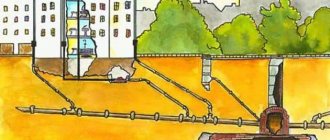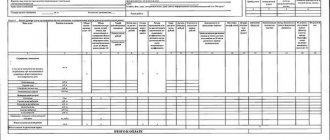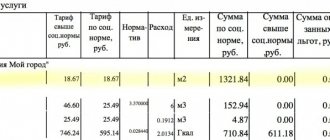Regulatory framework for waste management
The abbreviation MSW means that it is municipal solid waste. The scope of waste management is based on the acts of the regulatory framework. It determines the actions for collecting, removing, recycling, and recycling waste. The basic principles of appeals include:
- human health protection;
- environmental conservation and restoration;
- use of achievements of science and technology for processing and disposal;
- waste processing to reduce its volume;
- economic regulation of waste recycling activities;
- accessible information for the population;
- the international cooperation.
The acts are aimed at reducing the amount of garbage, preventing harm to the ecosystem, and cooperation with other countries to combat dangerous pollution of the planet. Regulatory principles are outlined by the federal law “On Production and Consumption Waste”.
Law on Solid Waste
At the legislative level, back in 1998, a regulatory legal act was adopted, the law on solid waste (No. 89-FZ), which regulates the management of solid waste. It provides both general definitions and requirements. For example, the third chapter contains the responsibilities of business entities whose activities pollute the environment. They have to:
- Pay the established fee for causing environmental damage;
- Introduce technological innovations for waste-free production;
- Independently monitor the environmental situation;
- Document the results of studies of solid waste storage sites.
After changes made to it in 2021, entities that have not received the appropriate license are prohibited from engaging in waste management activities. For reference!
What is the difference between MSW and MSW
Consumer goods that have lost their quality and food residues are classified as solid household waste. What does the concept of “municipal solid waste” mean? These are types of waste generated during the activities of law firms and individual entrepreneurs, similar in composition to those that accumulate in residential buildings.
This concept was introduced in Russia relatively recently. There is no big difference between the abbreviations. It has a broader meaning than household ones. In addition to the garbage accumulated by residents of apartment buildings and private buildings, the list of MSW waste includes the remains of the activities of commercial and legal offices. In official documentation, the name of household waste is replaced by MSW.
MSW and MSW contain waste belonging to all 5 hazard classes, therefore separate waste collection is a necessary step, without which the ecology of the planet will rapidly deteriorate.
Classification of municipal solid waste
There are inorganic and organic types of solid waste. The first type includes:
- metal;
- glass;
- car tires;
- polymers;
- textile;
- paper and wood waste.
Organic species include:
- food solid waste;
- vegetable;
- remains of animal and fish bones.
Each type of solid waste is distinguished by decomposition time, suitability for processing, and hazard class.
Hazard classes of solid waste
Household waste, when decomposing, poisons the atmosphere, water and soil. They are divided into groups according to the degree of danger.
Class 1 garbage is deadly to the environment and human life. There is no way left to restore the ecological system. The period of decomposition of substances is calculated in centuries.
Additional Information. An example of the devastating consequences for humans and the ecosystem is the accident at the Chernobyl nuclear power plant that occurred in April 1986. For many centuries a person will not be able to establish life there.
Improper storage and disposal of class 2 waste will harm the environment for many years to come. Collection, removal and destruction of hazardous waste is carried out in accordance with the rules for handling hazardous waste.
The harmful effects of Group 3 waste last for a decade. Household waste of this type should be accumulated in special containers. A large percentage of them are recyclable.
Industrial waste is classified as class 4. Despite their low danger, they can cause damage to nature. Scrap of this group should not be burned to avoid air pollution.
Class 5 household waste contains organic, paper, and wood waste. Their safety does not mean that recycling and disposal can be neglected. The volumes of this species are increasing annually.
Table No. 1 Hazard classes
| Hazard level by class | Name of waste | Composition of solid waste | Environmental validity periods |
| 1 – extremely dangerous | mercury-containing, radioactive | fluorescent lamps, thermometers, medical waste | impossible to restore |
| 2 – high danger | acid, lead | batteries, accumulators, items containing lead | 35 years to restore |
| 3 – medium danger | industrial | construction waste, residues from the oil industry, tires, cigarette butts, polymers | 10-15 years |
| 4 – low-hazard | MSW | glass, furniture, wood waste | 3-4 years |
| 5 – safe | household | paper, food waste, scrap metal | safe |
For municipal solid waste, disposal methods are provided, depending on the hazard class, which help preserve nature and human health.
Hazard classes of solid waste
Household waste is divided into 5 hazard classes. Let's look at each degree, starting with the most dangerous.
- Items that require extreme caution, as they can cause harm to people and nature. This group includes items containing toxic substances (thermometers, electric batteries, fluorescent lamps, etc.).
- Products that have a negative impact on the environment. These include: machine oil, batteries. Once the remaining harmful materials are removed from the surface of the earth, the soil can slowly recover.
- Materials that negatively affect nature, but it is still restored within 10 years. These are cement, metal objects, paint and other building materials.
- Items of this class are almost harmless to nature and humans. The environment under their influence is restored within 3 years. These include products made of paper, wood, plastic, etc.
- Harmless products that decompose themselves and do not have a dangerous effect on humans and nature. These are food products, ceramics, clay, bricks, etc.
This information will help you treat certain wastes correctly. However, it does not reduce the risk of their influence. To determine which class an item belongs to, you can look at the waste catalog (FKKO).
Accounting and processing of solid household waste
Russia still has a weak system for accounting and processing of solid household waste. Without this, it is difficult to organize full-fledged work to reduce waste volumes. To organize recycling it is necessary:
- Take into account and control the reception of solid waste at landfills.
- Establish control over waste removal from residents and businesses.
The solution to the problem lies in installing a video surveillance system at the landfills, maintaining a 1C accounting program or a logbook, where the number of vehicles and their numbers should be recorded in order to prevent the entry of unregistered vehicles. Brought garbage should be taken into account by weight.
Automation of actions can make work easier and reduce the time it takes to receive transport. Record keeping will collect accurate data about clients and equipment.
Accounted solid waste is subject to sorting and processing. There are several ways:
- Burial does not require large investments, but it is not effective. Garbage harms the soil, penetrates into groundwater and water bodies, infecting fish. Poisoned, it ends up on the table, posing a threat to people's health.
- Incineration reduces MSW waste, but is only safe when applied to paper waste and natural wood waste. When polymers and other hazardous wastes are burned, toxic emissions are generated.
- Recycling waste is suitable for plastic, ceramics, glass. Reduces the volume of landfills, but it is impossible to apply the method to all types of waste.
- The newest method is pyrolysis. In high-temperature plants, waste is separated into harmless components, producing gas and fuel for boilers.
This method of processing solid waste is currently considered the safest for the ecosystem.
Waste management logbook
Keeping a logbook is necessary in order to solve problems associated with environmental pollution. The document, in accordance with the legislation of the Russian Federation, is maintained in all organizations where municipal waste is generated from hazard classes 1 to 5. It takes into account:
- The amount of waste from the enterprise indicating the hazard class.
- Export date.
- The organization to which the waste was transferred.
- Disposal site.
- Signatures of responsible persons.
To carry out actions for the management of solid household waste, an agreement is concluded with an enterprise providing the relevant services.
Important! Each branch is required to maintain a separate journal.
Equipment for working with solid waste
Solid waste recycling is impossible without equipment. There are several types, depending on the actions performed with solid waste:
- Mobile devices – presses, shredders, compactors, sorting lines.
- Equipment for recycling raw materials - crusher, granulator, anglomerator.
- Special devices – grinders, tearers, piercers.
At the sorting line, incoming raw materials are divided by type, solid waste is classified, large fragments are broken up by shredders and fed under a press to reduce its volume. Compactors are placed in blocks for storage.
During recycling, waste is washed, dried, cleaned with anglomerators, crushed with crushers, and then sent to granulators for shaping. Special devices are needed for shredding waste paper and plastic, which are divided into parts by tearers for better recycling.
Solid waste standards per person
To improve waste management, accurate data on standards per person are needed. For calculations, an average number of 210 to 290 kg per year in apartment buildings is taken.
The figures are clarified by measuring and weighing waste from one specific site over a period of 7 days. The data is added up and divided by the number of residents, obtaining the rate of solid waste accumulation per person.
Reference. For private households, the average values are taken at a rate of approximately 300-340 kg per year.
The data depends on the time of year and the accumulated waste in the containers. To these are added the costs of collection, transportation, and wages to workers. According to statistics, it turns out that 1 person pays more than 2 rubles per m2 of housing. Calculations of the norm of solid waste per person allow you to calculate the amount of equipment needed.
How are solid waste landfills arranged?
Megacities in Russia produce tons of solid waste every day. They are taken to landfills that have their own structure.
Garbage dumps should be located at a distance of a kilometer from the nearest housing, and fenced off by forest planting 15-20 meters wide. You cannot set up a landfill near water bodies, including springs. There must be a road leading to it.
The areas occupied by landfills vary in size. The entire polygon is divided into parts that are used alternately. Each of them is designed for 4-5 years of operation. To protect against harmful emissions, they must be equipped with nets and screens.
The waste is disposed of in pits, which are lined with solid construction waste so that hazardous components do not penetrate into the ground. Every 2.5 meters of garbage is covered with earth. The filled sector is left, moving on to the next one.
Solid waste removal
Solid waste removal services are provided by municipal services. But insufficient funding contributed to the formation of commercial export companies.
A housing company enters into an agreement with the company. Waste containers are installed at each facility. Every day, according to a schedule, waste is removed to landfills using specialized transport.
Who is responsible for the collection and removal of solid waste?
Residents throw out household garbage every day, so they must take it out regularly. Who is responsible for this? Solid waste removal is a public service for which the management company is responsible. For this procedure, a special vehicle is used - a garbage truck. This vehicle helps collect waste and compact it to the maximum possible extent. After which it is transported to a landfill, and in some regions to a company that processes waste.
There is a large selection of garbage trucks with different loading methods: top, rear and side. Most often, a manual loading unit is used, as it is simple and convenient to use.
After the solid waste has been removed, it must be disposed of. To do this, first reduce the volume of collected waste, after which one of the disposal methods is used. Here are some of them:
- burial;
- composting;
- burning;
- recycling.
The latter is a modern method of disposal, which is being actively developed in many countries.
Recycling of municipal solid waste
Developed countries identify waste recycling as a separate sector of the economy. In Russia this area is poorly developed. Separate collection of accumulated waste can contribute to its recycling up to 70-75%.
The process reduces the volume of landfills and gives things a second life. You can recycle paper, wood, plastic, and glass waste. For example, 100 tons of tin cans will yield a ton of tin. Recycled plastic will be used to make jackets and linings for clothes.
Mountains of abandoned car tires will turn into durable road surfaces and sidewalks. Glass and ceramic waste is used to create dishes and bottles. Wood and paper can be used to create new household items.
Calorific value and humidity
The decrease in density is directly related to the increase in another indicator: calorific value. The increasing share of paper and plastic directly increases it. The average value is 2000 kcal/kg and also increases steadily over time.
For drying and other technological processes, the moisture content of the feedstock is important. This parameter is subject to significant seasonal fluctuations and depends on climate; it can be 40-58%. The main source of moisture is food waste. If we take it separately for this group, the value is 60-70% in winter and spring to 85 in the summer-autumn period.
For the efficiency of storage, burial, transportation and disposal, it is necessary to take into account all of the listed values with reference to a specific locality or region. Knowing the composition of MSW will help you competently organize your recycling business and make it profitable and economical.









